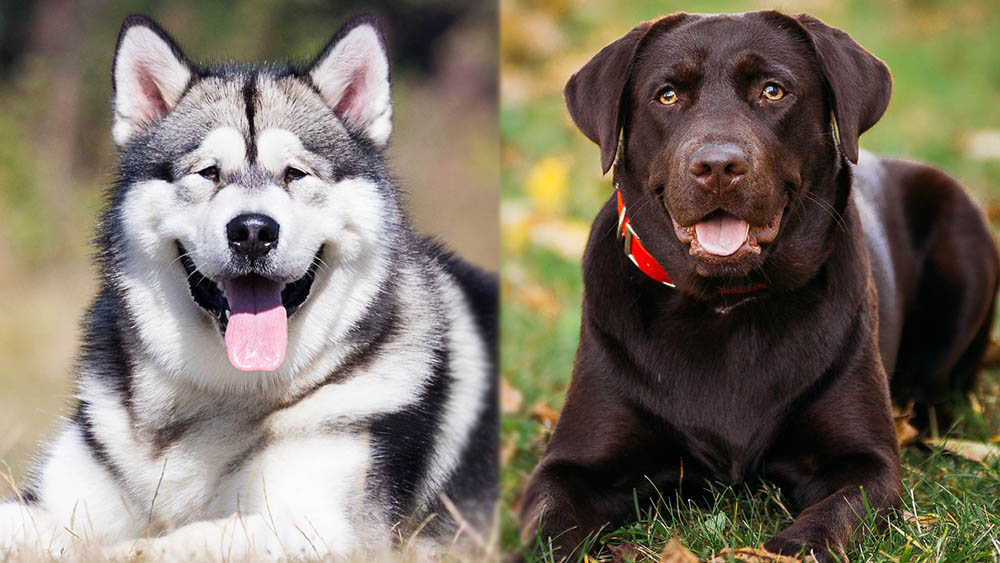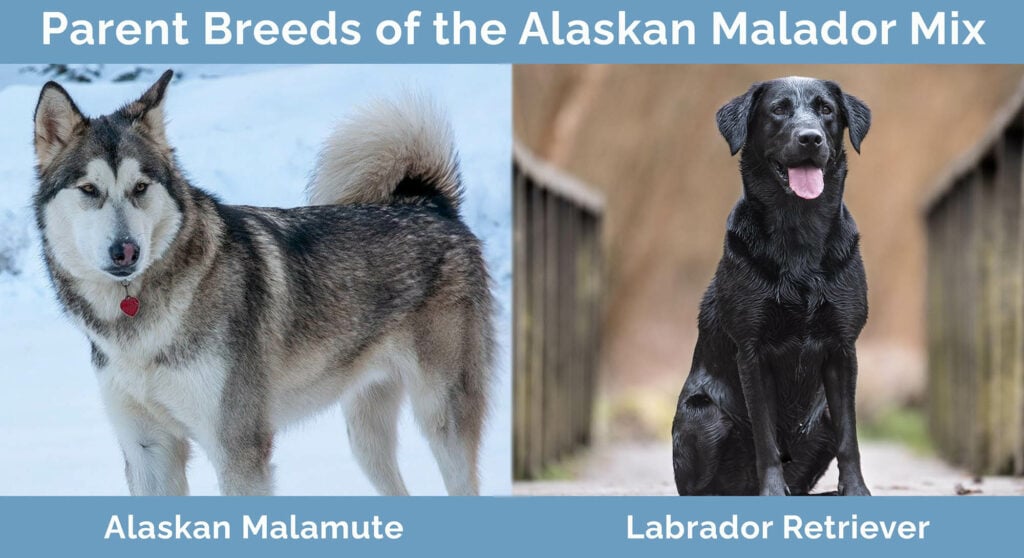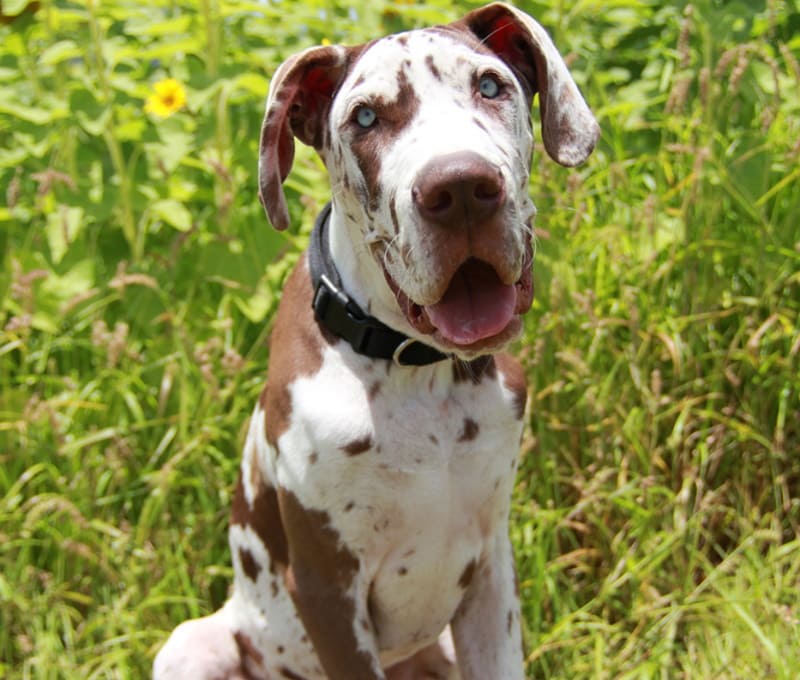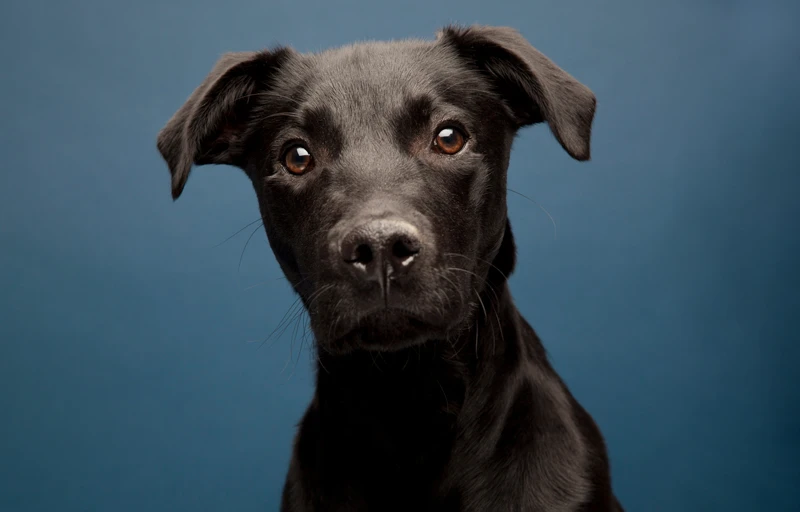Alaskan Malador: Care, Pictures, Traits & Characteristics

Updated on

Mixed breeds have the perfect blend of traits from two pedigree breeds, and the Alaskan Malador demonstrates this brilliantly. If you’re looking for a dog with the endurance and high energy of the Alaskan Malamute but the friendliness and versatility of the Labrador Retriever, the Alaskan Malador is for you!
They’re not recognized by kennel clubs, but they are still a popular hybrid breed. Here’s an overview of what makes the Alaskan Malador unique, their care needs, and their best traits.
Breed Overview
| Height: | 21–25 inches |
| Weight: | 55–85 pounds |
| Lifespan: | 10–14 years |
| Colors: | Black, blue, brown, cream, gray, red, silver, white |
| Suitable for: | Active families, experienced dog owners, families with older children, homes with a yard |
| Temperament: | Easy to train, intelligent, strong-willed, loyal, vocal |
A mix of the Alaskan Malamute and the Labrador Retriever, the Alaskan Malador (or the Labramute) is an energetic and friendly companion with a high work ethic. However, they’re not a breed that does well on their own or with quiet, sedate families.
With an active owner, these dogs are dedicated, playful, and intelligent. They’re eager to please but can be stubborn, especially if they’re bored, and will need an experienced and consistent owner to teach them everything that they need to know.
Alaskan Malador Characteristics
Alaskan Malador Puppies
Both the Labrador Retriever and the Alaskan Malamute are popular dogs, so it’s safe to say that the Alaskan Malador is popular too. While you might not find an Alaskan Malador listed as a breed at your local shelter because they’re not recognized by kennel clubs, you might find one listed as a generic mix instead. A trustworthy breeder will be able to give you a full health and genetic history.
You’ll need to encourage a healthy level of activity as your puppy grows. Since Alaskan Maladors are prone to hip and elbow dysplasia like the Labrador and the Malamute, remember to give their joints enough time to develop properly before encouraging strenuous activity. You can help aid their growth by providing them with a diet formulated for medium- to large-breed puppies.
The early years are also the best time to work on socializing your dog and starting their training. This will help them learn to manage their energy and figure out how to behave. Reward them with attention and playtime to help your puppy grow into a happy, well-rounded dog.

Temperament & Intelligence of the Alaskan Malador
Energetic and sociable, the Alaskan Malador takes the most loved traits of their parent breeds and combines them into one package. With the friendly, adaptability of the Labrador Retriever and the steady endurance of the Alaskan Malamute, the Alaskan Malador is both a keen worker and an affectionate companion.
Most of all, they’re people-oriented dogs that love affection. While this means they’re eager to please and easy to train when you use reward-based and fun methods, they are also prone to separation anxiety.
Building a routine, encouraging them to bond with the whole family, giving them plenty of attention, and encouraging them to participate in family activities will help manage their reliance on attention. They dislike being home alone for too long, though, so break up long days at work with a quick lunch break at home or ask a friend to check in on your dog.
Alaskan Maladors are always ready to play. They’re full of energy and enthusiasm for every task that you give them, especially if it’s an activity that they can do with you. You need to be prepared to be just as active as they are, though! They’ll frequently run rings around you if given the chance, and their energy levels can be difficult to manage without proper outlets.
You also need to be ready for their stubborn streak. They are intelligent dogs and aren’t afraid to show it. If they get bored or aren’t trained, they’ll find their own solutions to problems, which often leads to unwanted behavior. Obedience training isn’t just recommended to teach them how to behave; it also keeps their minds active.
Are These Dogs Good for Families? 👪
Since they’re a descendant of the family-favorite Labrador, you might assume that the Alaskan Malador is just as suitable for all family types. However, you have to consider their Malamute heritage. While Alaskan Maladors are friendly and gentle like both of their parent breeds, they are prone to hyperactivity, mouthiness, and nipping.
Their playful antics will suit active families with older children who are familiar with dogs. However, the Alaskan Malador might accidentally hurt or bowl over younger children due to their size, exuberance, and high energy levels.
Unfortunately, this is not a breed that’s well suited to apartment life. They do best in a large home with a yard to run around and play in. They’re also not suitable for families who prefer to stay home all day. These dogs are too active and prone to boredom to be happy spending the day on the couch, even if they do get to cuddle with you.
Does This Breed Get Along With Other Pets?
They might be keen to make friends with the world, but the Alaskan Malador has a high prey drive. Although they’ll get along with other dogs that are a similar size or larger than they are without a problem, there might be issues with smaller breeds or cats.
If socialized with other pets early enough, your Alaskan Malador puppy will learn that their smaller companions are part of the pack. You should still use caution when letting them interact with small pets, especially birds or pets that can’t defend themselves if your Alaskan Malador gets too excited.
Things to Know When Owning an Alaskan Malador
Getting a puppy is always exciting, and having a mix of two of your favorite breeds is even more so. With the Alaskan Malador’s working dog bloodline comes unique care needs. Their food, exercise, health, training, and grooming needs are all important factors to consider.
Food & Diet Requirements 🦴
As a medium to large breed, the Alaskan Malador should eat 2–3 cups of food per day. This can be wet or dry food or a mix of both, but it should be tailored to their age, health, and individual nutritional needs. A formula designed for active breeds is a good choice for them, and your veterinarian will be able to help you determine your dog’s specific nutritional needs.
You can also make dog food at home, provided that you follow veterinary-recommended recipes and ensure that you meet all the nutritional requirements that your dog has. Also, both parent breeds are prone to bloat, so make sure the meals are split into smaller portions, and avoid letting your Alaskan Malador exercise immediately before and after mealtimes.
Exercise 🐕
If you enjoy long, lazy days at home, the Alaskan Malador isn’t the breed for you. They’re descended from two high-energy breeds that were bred for working. Not only are they exuberant like the Labrador, but they also inherit the Malamute’s impressive stamina. While this blend of energy and endurance serves them well as service dogs or for search and rescue, obedience, and agility, it can be difficult to manage.
Your Alaskan Malador will need between 1 and 2 hours of activity a day. This should be in the form of regular walks and active games in the yard or dog park. Giving them tasks to do or using puzzle toys or treasure-hunt-style mealtimes can also help keep their brains active.
Without enough exercise, your Alaskan Malador will be prone to destructive behavior or hyperactivity as they try to treat their boredom.
Training 🎾
Their eagerness to please is something that makes the Alaskan Malamute and the Labrador Retriever highly desired among pet owners. With their intelligence, however, comes a stubborn streak. Considering the Alaskan Malamute’s strong-willed independence, it’s no surprise.
While they’re incredibly good at learning new commands and are easy to train, they also get bored quickly. The Alaskan Malador needs an owner who’s experienced in dog training and knows the best and most effective ways to keep training sessions positive and fun. If you want brief advice, don’t use harsh training methods, keep sessions short, and keep your Alaskan Malador’s attention with playtime and affection and by letting them know how proud you are.
Grooming ✂️
The Alaskan Malador has a thick waterproof coat. It can either be short or medium in length, but they will shed it throughout the year and excessively during the summer months. Although this breed won’t need baths that often, you’ll need to brush their fur regularly to remove dirt and loose hair. While you might have to brush them daily during summer, throughout the rest of the year, once or twice a week is ample.
For the rest of their grooming needs, you’ll need to regularly trim their claws and brush their teeth. Checking their ears and skin for infection or sore spots is recommended too.
- Related Read: 10 Best Dog Shampoos – Reviews & Top Picks
Health and Conditions 🏥
With no breed standard of their own, it’s difficult to predict which health issues are most likely to affect hybrid breeds like the Alaskan Malador. We can make an educated guess based on the issues that both the Labrador and the Malamute are prone to, however. In particular, you’ll need to watch out for eye problems, joint dysplasia, hypothyroidism, epilepsy, and bloat.
If you visit a breeder, make sure they screen their dogs for common health problems. While most Alaskan Maladors are healthy dogs, learning about the issues that they might face can help you recognize the signs and get treatment as early as possible.
- Progressive retinal atrophy
- Glaucoma
- Skin problems
- Bloat
- Hip and elbow dysplasia
- Epilepsy
- Hypothyroidism
Male vs. Female
Alaskan Maladors are affectionate and family-oriented, whether you choose a male or a female. Like most dog breeds, the females are sometimes more aloof than the males, but both sexes are playful, dedicated to their owners, and easy to train.
It is worth noting that male Alaskan Maladors have been known to act aggressively toward other male dogs. For this reason, if you want two dogs, it might be a safer option to choose a male and female pair and make sure they’re neutered and spayed unless you plan on breeding them.
3 Little-Known Facts About the Alaskan Malador
1. They’ve Probably Been Around Since the 1800s
Mixed breeds have been around for almost as long as pedigrees, but it’s only been recently that hybrids have grown in popularity. While the Alaskan Malador isn’t recognized by the AKC or other kennel clubs, they’ve been around for quite a long time.
The Alaskan Malamute and the Labrador Retriever both became incredibly popular in the U.S.A. during the 1800s. Since they were both in the same areas, it’s relatively safe to say that the Alaskan Malador has likely been around since that time too, even if the crossbreed wasn’t known by name.
2. They Look Like Labradors With Malamute Coloring
There might not be a breed standard yet, but individual Alaskan Maladors still have certain traits that are shared across the hybrid breed. For example, they typically share the same body shape and size as the Labrador but have the coloring of the Malamute. While you might find puppies that look more like a Labrador or a Malamute depending on their genes, the Labrador body shape and Malamute patterning is an easy way to recognize the breed.
3. They Need a Job to Do
It’s easy to underestimate how intelligent dogs are, but you shouldn’t with this breed. Since both parents are incredibly intelligent, the Alaskan Malador is too. It’s also worth remembering that both the Labrador and the Malamute might be popular companion dogs today, but they were originally bred for work.
Many members of the two breeds are still used as working dogs today, and their versatility, dedication, endurance, and work ethics make them worth their weight in gold. Unfortunately, this means if you’re looking for a lazy companion, the Alaskan Malador isn’t the dog for you.
They get bored easily, and to manage their energy levels and keep their minds active, they do best with a job to perform. Fortunately, like the Labrador, they excel at all sorts of tasks, from performing search and rescue, pulling sleds, and hunting to being service dogs. They also do well in agility and obedience trials, as well as other sporting events.
Final Thoughts
The Labrador Retriever has long since been adored in the U.S.A. for their smarts and versatility. Not far behind them on the popularity list, the Alaskan Malamute is favored for their endurance, work ethic, and playfulness. Since both breeds have been in the U.S. since the 1800s, the introduction of a hybrid of the two isn’t a surprise.
Alaskan Maladors might have the body shape and friend-of-the-world sociability of the Labrador, but they have the markings and endurance of the Malamute. They are fiercely energetic and intelligent, which makes them excellent for experienced owners who can both keep up with their energy levels and keep them interested in training sessions.
Once socialized and properly trained, the Alaskan Malador is a wonderful companion for small or large families with older children. They need space to run, though, and can be vocal when bored, so they aren’t recommended for apartments. While they’re hard work, they’ll reward your dedication with loyalty and affection.
See also:
- Alaskan Malamute Corgi Mix: Care, Pictures, Traits & More
- Alaskan Malamute Rottweiler Mix: Care, Pictures, Traits & Characteristics
Featured Image Credit: (L) Happy monkey, Shutterstock | (R) Ajtai Krisztina, Shutterstock













